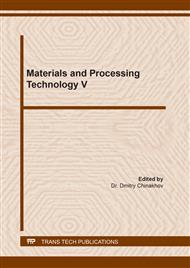p.57
p.63
p.73
p.83
p.93
p.99
p.107
p.115
p.123
On Mechanism of Weld Crystallization in Arc Welding with Controlled Actions
Abstract:
A review of publications on metallurgical and foundry production showed that many authors, when analyzing the properties of liquid metals and alloys, proceed from the concept of their cluster structure. The cluster structure of a liquid is a hypothesis, but it is confirmed by studies of diffraction of X-rays, electrons and neutrons reflected from its surface. This paper considers the existing concept that a cluster is a crystal-like concentration of atoms. Around the clusters there is a weakened zone, which consists of disordered atoms, the volume of which does not exceed 3 ... 5%, and this provides the fluidity of many melts. The authors of the publications have achieved success in explaining the forming structure of ingots, proceeding from the cluster mechanism of the crystallization of liquid metals and alloys. The authors of this work suggested that the superheated liquid metal in the head of the bath, which has smaller clusters, moves under the action of magnetic fields to its tail, and provides refinement of the weld metal structure during welding with the action of a control transverse magnetic field.
Info:
Periodical:
Pages:
93-98
Citation:
Online since:
February 2022
Authors:
Keywords:
Price:
Сopyright:
© 2022 Trans Tech Publications Ltd. All Rights Reserved
Share:
Citation:


